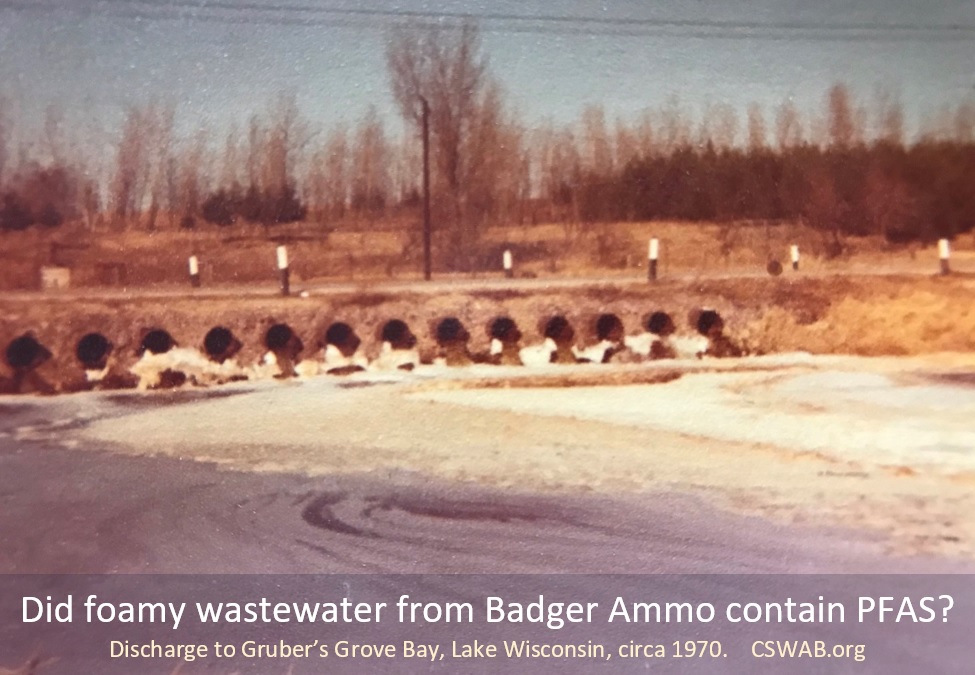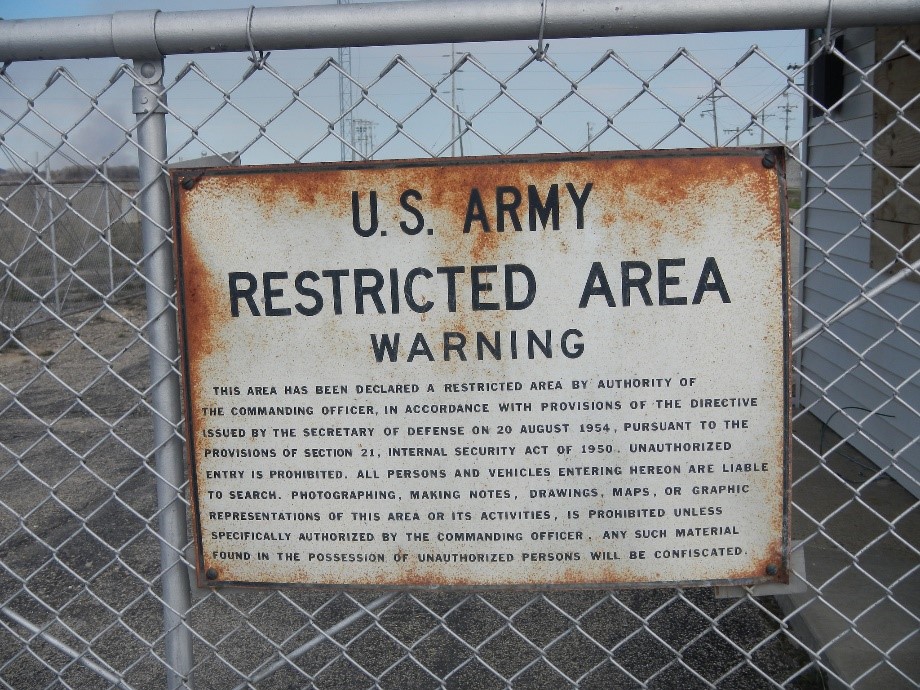
It has been one year since the U.S. Army first announced that toxic PFAS chemicals found in certain firefighting foams had been discovered in soils and groundwater at Badger Army Ammunition Plant (Badger) and area residents are looking for answers.
“We are growing increasingly concerned that private drinking water wells may be at risk for PFAS contamination from Badger as the degree and extent of possible soil and groundwater contamination still remains undefined and recommended off-site testing has still not occurred,” CSWAB said in its March 1, 2021 letter to the Wisconsin DNR.
The Army’s preliminary report on PFAS at Badger was first submitted to state regulators in March of last year. After review, the Wisconsin DNR issued a letter on May 5, 2020 asking the Army to conduct additional study, stating that there is “considerable uncertainty regarding potential discharges of PFAS at this site.”
The news prompted community members on the local Restoration Advisory Board (RAB) to seek technical support. As part of a federal program available to the RAB, the Army engaged the U.S. Geological Survey (USGS) to conduct an independent review of the PFAS study at Badger.

In May 2020, USGS issued three principal recommendations based on its review.
USGS recommended that the Army implement a groundwater sampling plan in the former Firefighter Training Area (FFTA) because soil sampling at depth indicates that “PFAS is likely in the groundwater in that area.” The FFTA is located in the northwest corner of the former Badger munitions plant in the Town of Sumpter.
Second, on the other side of Badger in the Town of Merrimac, USGS noted that a closed landfill was identified by Army as a potential source of PFAS but that the Army failed to collect any soil or groundwater samples in that area. USGS recommended that some groundwater samples be collected and analyzed for PFAS due to the “presence of numerous residential wells downgradient.”
Last, USGS recommended offsite testing “as the highest concentrations of PFAS in groundwater were detected near the southern Badger boundary.”
“Because of the relatively high mobility of PFAS and highly transmissive aquifer system, PFAS compounds might have moved beyond the (Badger) boundary and possibly under or beyond the Wisconsin River,” USGS said. “It is recommended, as a precautionary measure, to sample for PFAS in selected residential wells and across the River, if possible.”
On September 9, 2020, the Wisconsin DNR issued a formal letter to the U.S. Army requesting that a more comprehensive investigation of the nature and extent of PFAS in soil and groundwater be conducted at Badger. Although the detected PFAS concentrations in groundwater at Badger were generally low, the WDNR found that the Army’s initial study indicates the “possibility of a discharge to the environment of these chemicals from site activities at Badger” and that the Department “believes there is considerable uncertainty regarding potential discharges of PFAS at this site.”
 Neighbors of the Badge property have been waiting years to have their wells tested for PFAS. In September 2018, more than 100 people, including members of the community’s Restoration Advisory Board, signed a resolution asking that the Army test all public drinking water systems within a four-mile radius of Badger for PFAS. The resolution asked that the Army include PFAS analysis as part of its efforts at the time to test approximately 300 residential wells near the former military base. The Army has not agreed to conduct either, and the WDNR has not yet mandated the testing.
Neighbors of the Badge property have been waiting years to have their wells tested for PFAS. In September 2018, more than 100 people, including members of the community’s Restoration Advisory Board, signed a resolution asking that the Army test all public drinking water systems within a four-mile radius of Badger for PFAS. The resolution asked that the Army include PFAS analysis as part of its efforts at the time to test approximately 300 residential wells near the former military base. The Army has not agreed to conduct either, and the WDNR has not yet mandated the testing.
As to the current status of PFAS studies at Badger, the WDNR recently emailed CSWAB saying: “The Army has conducted additional sampling at the facility. Those results are anticipated to be submitted to DNR in late March in the form of a revised Preliminary Assessment/Site Investigation. We will review that information in light of your comments and information. We will provide comments and recommendations to the Army based on the totality of the data.”
In addition to outreach to area residents, CSWAB is urging the WDNR to issue an enforceable compliance schedule for the work products it has requested of Army. Enforceable timelines can mean a higher priority for federal funding and greater protection for host communities.
Per- and polyfluoroalkyl substances (PFAS) are a group of man-made chemicals that includes PFOA, PFOS, GenX, and many other chemicals. Examples of products that may contain PFAS include cleaners, textiles, leather, paper and paints, fire-fighting foams, and wire insulation. Certain PFAS can accumulate and stay in the human body for long periods of time. Exposure is linked to serious medical problems, including cancer, infertility, and impaired fetal development.
REFERENCES:
PFAS Preliminary Investigation Badger-Army 10 March 2020
WDNR Comments on Badger Army PFAS Prelim Assessment 15 May 2020
USGS Comments on Badger PFAS Study 22 May 2020
WDNR Letter Badger Army Request for Additional PFAS Testing Work Plan 9 September 2020
